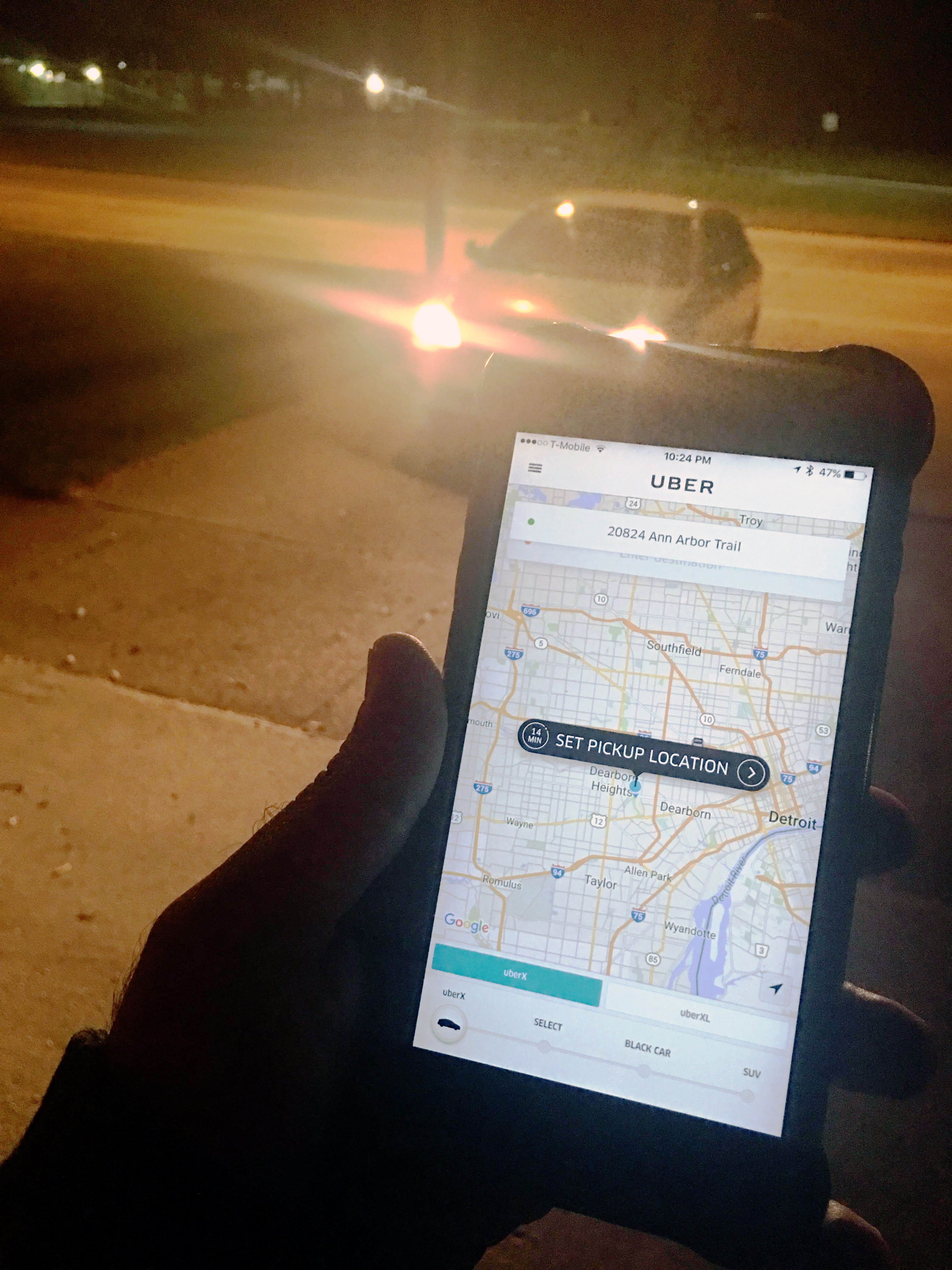Lyft and Uber: The Battle for Road Domination
Gallery

Two relatively new companies Uber, and Lyft, founded in 2009 and 2012 respectively, have revolutionized public transportation by offering jobs and affordable transportation alternatives. Both companies utilize an application, available on both Android and iPhone platforms, where drivers and riders can communicate via app, which makes hailing a ride simpler than traditional taxi services. Since the cars and insurance are privately owned by drivers, and Uber and Lyft do not require taxi licenses, fares tend to be more affordable. However, not everyone sees this new ride share market as being safe or lucrative.
Many state laws are changing in order to address Uber and ride-sharing concerns. It states in a Michigan Capitol Confidential article, written by Geneva Ruppert, that “The Legislature is considering a few different approaches to regulating ride-sharing. A package of bills that passed the House last summer would provide a light statewide regulatory structure for transportation network (or ride-sharing) companies, setting standards for insurance, background checks and disclosure of information for consumers.”
These new laws would also be used to address the safety concerns of ride sharing, likely in part due to the Kalamazoo case that took place in Michigan in February 2016, where, according to the Detroit Free Press article, “Kalamazoo driver blamed the Uber app for shooting rampage,” Jason Dalton, an Uber driver was arrested for killing 6 people after he “claimed to have been possessed by his Uber app.”
Along with safety concerns, these new companies have also caused many taxi drivers worldwide to lose fares. In The Guardian’s article, “Uber Backlash: Taxi Drivers' Protests in Paris Part of Global Revolt,” Charles Arthur states, “it costs more than €100,000 (£71,000) for a taxi license in Paris. Uber drivers, though, pay nothing, using their own cars and just paying a proportion of their takings to the company for the rides they pick up. There has been similar anger...in New York where taxi licenses, called ‘medallions’, can cost a million dollars. And regulators, courts and police have been raising concerns around the world, too.”
Because of this, companies such as Uber and Lyft have been banned in areas in the US, as well as in countries such as France and Italy. But Uber and Lyft do not just affect taxi drivers. As independent contractors, the drivers of these companies are affected as well. Gillian B. White of The Atlantic writes in her article, “In the Sharing Economy, No One's an Employee,” that, “There are lots of legal perks that are tied to being an employee: minimum wages, overtime benefits, health insurance, workers compensation for those hurt on the job, unemployment benefits for those who are laid off, proof of employment for those trying to rent or get a loan, and, perhaps most significantly, lower taxes (workers who are “independent contractors” have to pay the employer’s share of payroll taxes). When employers choose to call workers contractors instead, it absolves them of these legal obligations, and saves them tons of money.”
However, not everyone sees working as an independent contractor as a negative. “I can set my own hours,” state's Hanna Salameh, Lawrence Tech college student and part time Uber driver. “I’m my own boss and I can make money any time of day or night.” Many other Uber and Lyft drivers share the same opinion.
These apps and ride-shares are not just convenient to drivers and passengers. Automakers are wanting part in the ride-sharing market as well. Toyota has announced its lease agreement with Uber. In the Tribune News article, “Toyota Invests in Uber Ride-sharing”, it states that “the companies plan to crease new leasing options so Uber drivers can lease Toyota vehicles and cover their payment through their income from driving.” This would allow drivers to meet the Uber car standards, as well as provide an affordable alternative to traditional car payments. Similarly GM developed a partnership with Lyft which, according to a Fortune article by Kirsten Korosec, “General Motors and new business partner Lyft are launching a short-term car rental program aimed at bringing on more drivers to the ride-hailing service.” Car rentals are given at a discounted rate based on the number of rides given. This is done to make driving for Lyft more accessible, since there are guidelines to which cars can be accepted as Lyft cars.
With the investment and involvement of big name companies like Toyota and GM, the future of ride-share is continuously growing and evolving. But the next envisioned step in ride-share service brings up a plethora of other questions: the use of completely autonomous vehicles. According to Reuter’s writer David Shepardson, Google, Ford and Uber, along with other companies are, “forming a coalition to push for federal action to help speed self-driving cars to market”. The idea is that in doing so, rides will become safer. However, Shepardson continues, stating that “under current regulations, fully autonomous vehicles without human controls are not legal.” Notwithstanding, in the future, the idea could be attractive to both companies and consumers for many reasons. Still, with companies like Uber developing a self-driving car, what will be the future for Uber drivers?
